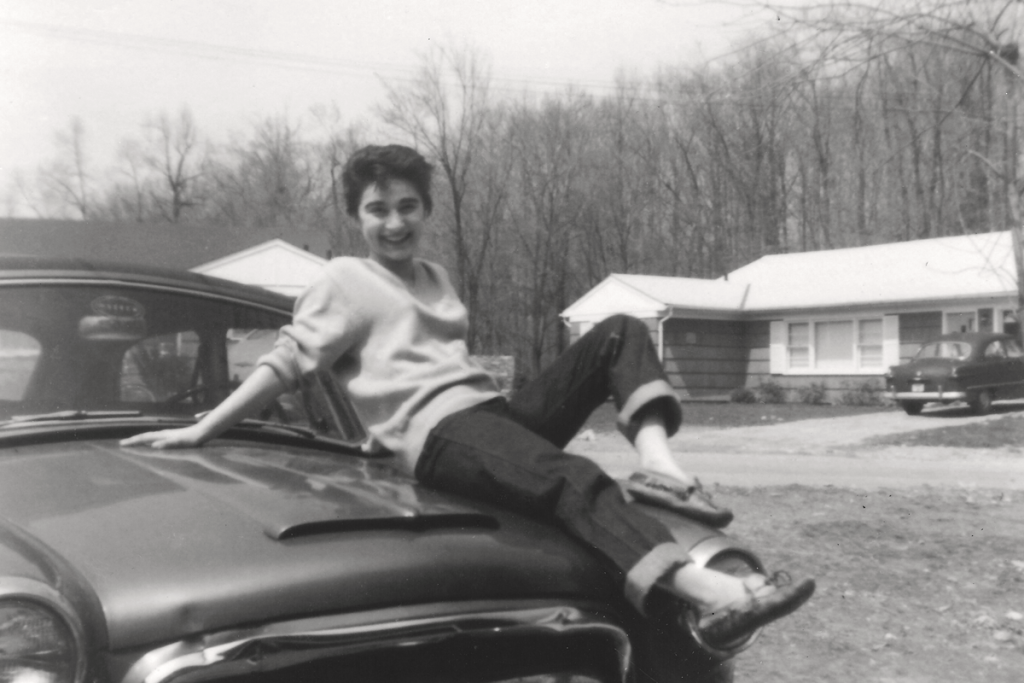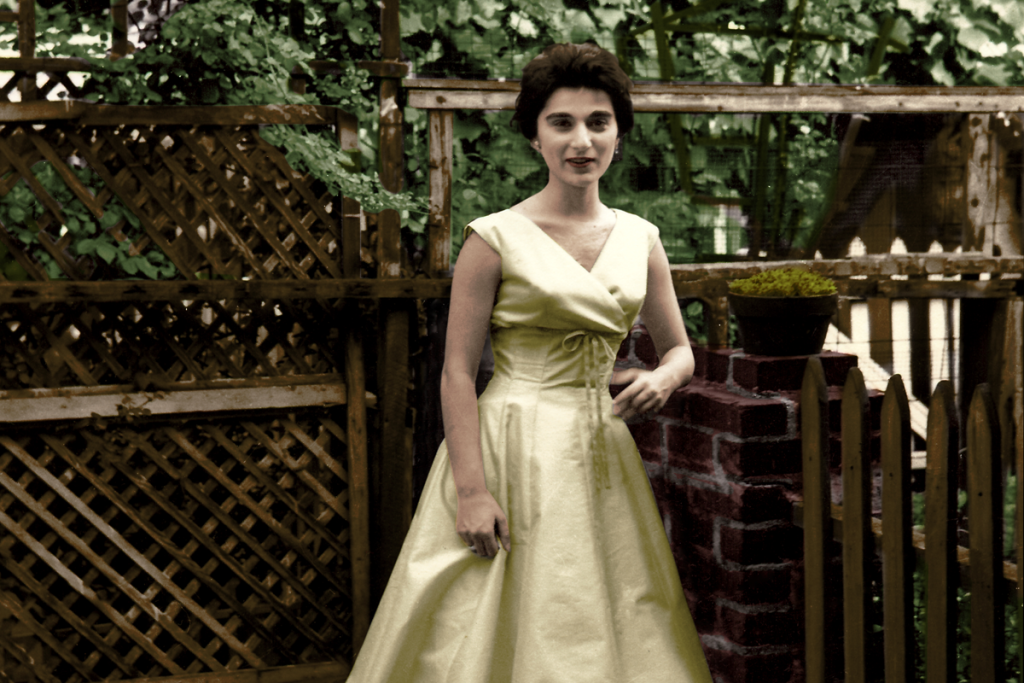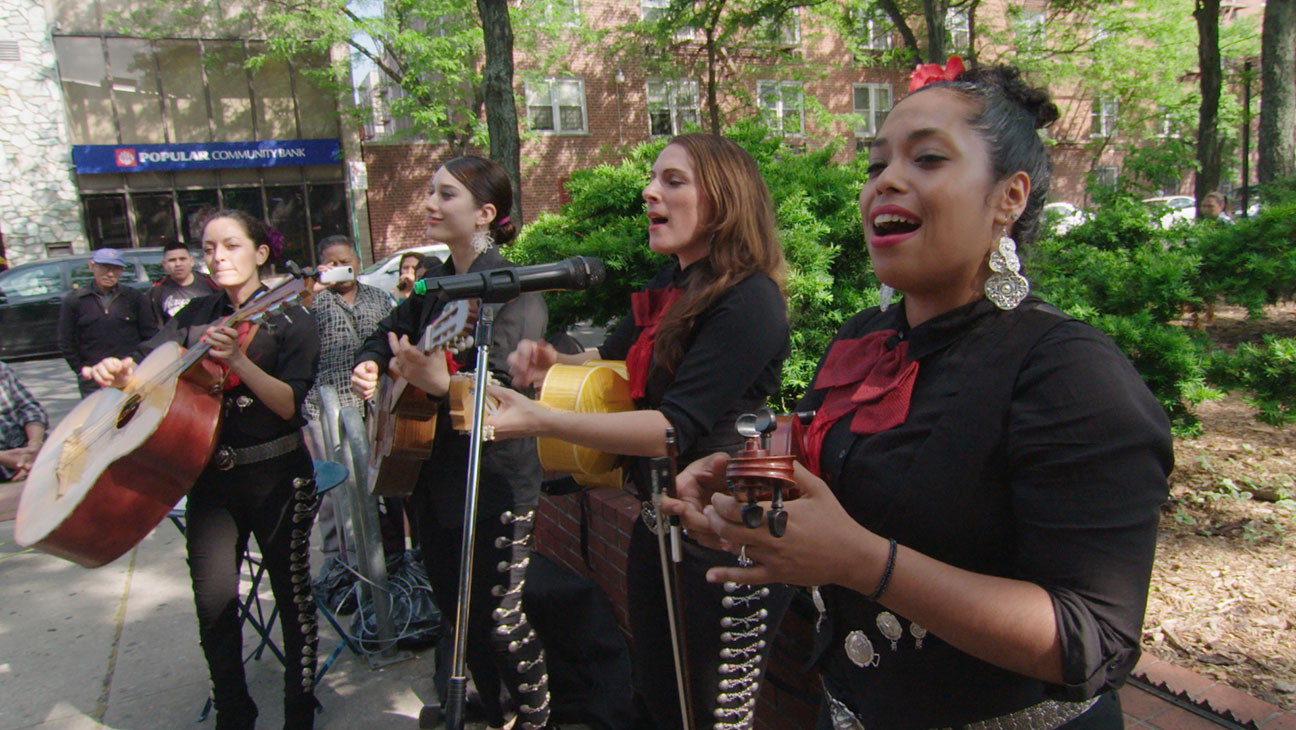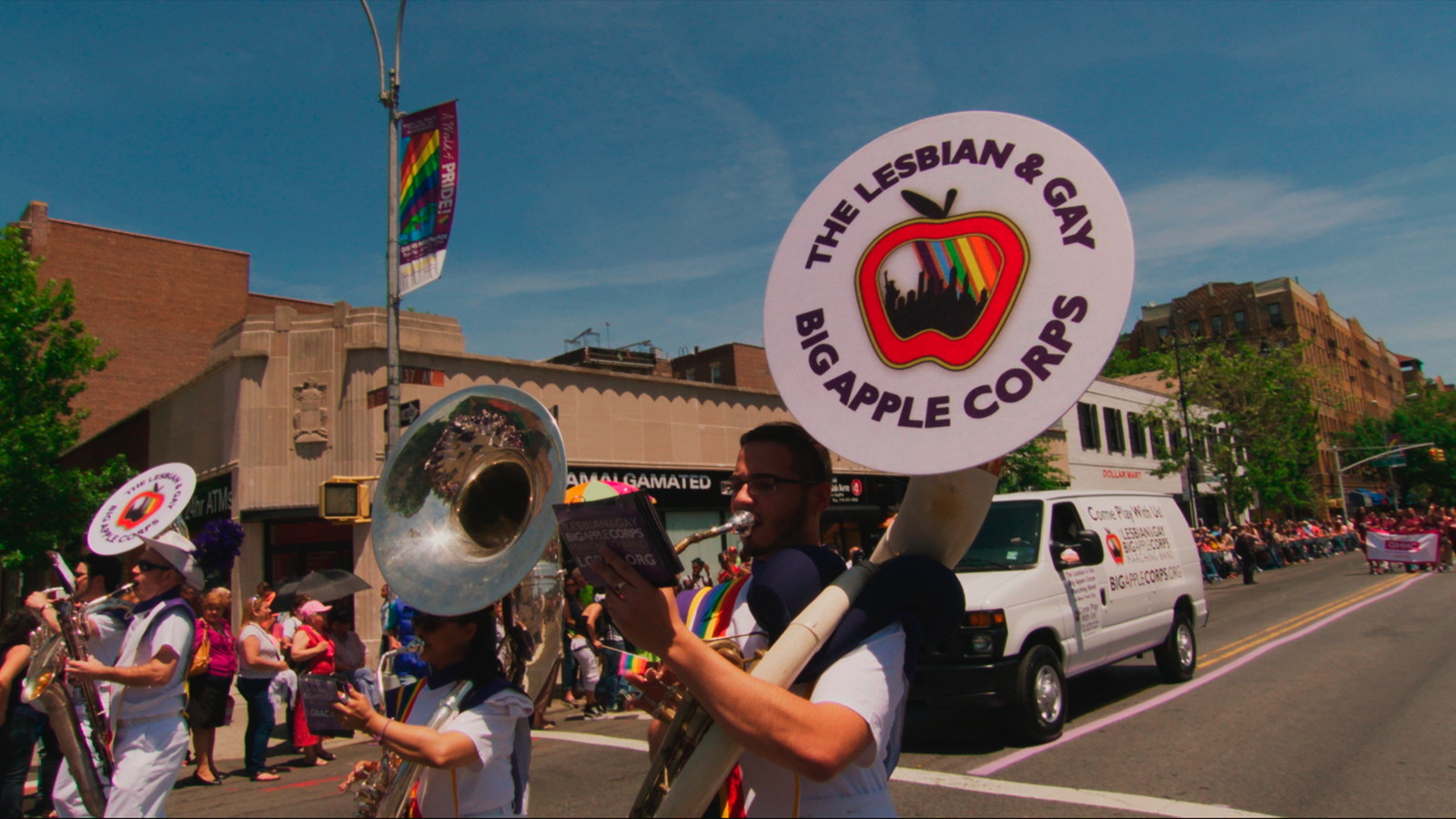“[Kitty’s] murder defined New York City in the 1960’s as dangerous and cruel, and declared that we were all alone.” — James Solomon
A notorious murder and a contemporary patchwork of urban diversity buck the monotony of New York films.
Now that the steadfast conquests of gentrification have essentially forced every Manhattan building and its inhabitants to be stacked like Legos, and resulted in an organic-vegan-frozen-yogurt-juice-bar-and-yoga-studio on every Brooklyn corner; so too has the overwrought and restrictive litany of NYC-driven films — whose urban sensibilities seem to lay exclusively with these more vogue boroughs — reflected this peak of saturation; and there is a tired weariness creeping over the unofficial genre of The New York film. With so few pictures approaching this city’s depiction through the lens of spaces other than such glorified domains, it only makes sense that Queens would soon be drafted for the task of adding some texture to the tepid landscape of urban representation seen in today’s New York-centered films. Still, that the New York Film Festival included in its lineup two films where Queens serves as a prominent and integral fixture is quite satisfying and more than a little unexpected; a telling reflection of, and necessary corrective to, the stringent homogeneity and excessively polished veneer characteristic of contemporary cinema’s iterations of New York City life.
James Solomon’s “The Witness” and Frederick Wiseman’s “In Jackson Heights” (now playing at Film Forum) present Queens as both a gripping and textured muse; one with a distinct pulse whose (omni)presence is fundamental to the fabric of each film and the stories they wish to tell. Respectively set in the neighborhoods of Kew Gardens and Jackson Heights and collectively spanning five decades, these documentaries present two very different portraits of their ambient subject that are as much about place as they are about its culture at a certain moment in time — two snapshots that together, encompass an expansive and evolving ethnological urban landscape over the years, as seen through the Queens milieu.
With the infamous Kitty Genovese murder serving as context and narrative catalyst—in which Kitty was sexually assaulted, brutally murdered and left to die at a Kew Gardens neighborhood corner, while 38 eyewitnesses in nearby buildings purportedly saw the whole incident yet retreated to their apartments without intervening — “The Witness” chronicles the efforts of Kitty’s brother Bill Genovese as he revisits the gruesome details of the case, tracks down Kitty’s friends, and sets out to question its myriad of witnesses — those still alive, anyway — key investigative players and even the convicted killer Winston Moseley himself; in search of answers that hopefully get to the bottom of what exactly happened the tragic night of March 13, 1964. The crime’s grisly details, coupled with the ensuing media narrative of its onlookers’ bizarre and astonishingly grim indifference, soon allowed Kitty’s death to achieve the status of urban legend—a legend that continues to be mythologized for over half a century as the “symbol of urban apathy”, notes Bill. Yet after a lengthy 2004 piece published in “The New York Times” criticized the outlet’s own original reporting, questions arose regarding the factual accuracy of this long-accepted story — and this was all that was needed to plant doubt in its validity, and slowly dismantle the collective perception of urban callousness it helped cultivate.

Tormented by the long-held belief that his sister’s last moments on earth were spent alone and terrified because no one cared enough to help her, and now facing the penetrating realization that his life was altered by what was a distortion of facts at best and an outright lie at worst; Bill is mobilized by the mere possibility that the infrastructure supporting Kitty’s public legacy, one of a scandalized and neglected tragic figure, could soon crumble. Through its probing re-investigation and its burning look at the case’s emotional devastation on Kitty’s loved ones, there is a consequential and compelling brevity to the film that is most effectively realized through its personal thread, which sources the documentary’s most wrenching moments and serves as the heftiest driving force in its unraveling mystery–as evidenced in the scene with Bill and Mary Anne, Kitty’s former roommate who reveals that the two were actually lovers. Through these family dinners, flashback footages of Kitty, and scenes of loved ones reminiscing and reflecting, we also learn how the case’s notoriety nurtured a public persona that monopolized even friends and family members’ fond memories and recollections of this young woman in life. At one point in the film, Bill laments to the camera how the overwhelming attention the case received eventually tainted even his own memories of Kitty, and replaced what little intimate remembrance and knowledge he had of her at a young age with the calcified image of infamy — so that his sister soon became a stranger. Through her tragic demise, Kitty’s memory had been hijacked and immortalized in her death.
Because the very nature of this story dictates a thoughtful consideration of man’s inhumanity, Solomon’s Kew Gardens is necessarily a land of utter bleakness — and the film’s heavily permeating sense of tainted nostalgia allows his Queens subject to serve as a portal to the past: one that exudes a dreary stasis and preserves a kind of retrograde mindset of civic passivity present during the long-ago days of Kitty’s death. While this case naturally paints an extremely hostile and alienating portrait of urban life, Solomon seems to exacerbate this sense of alienation through stylized cinematography and sensationalized storytelling that perversely engage with the story’s lurid aspects—and thus exploit the very scandalous titillation the documentary seeks to scrutinize and rectify. We are introduced to the Genoveses’ story amidst present-day footage of the various crime scene locales and their surrounding neighborhood, which provide the visual analogue to Bill’s voice-over narration and thus delve us right into his obsessive mindset. Following Bill as he returns to the streets that saw his sister’s final moments; Solomon’s camera walks us through with tracking shots that are given the ultimate true-crime touch via slo-mo, a photographic palette that imbues many shots with a murky brown-green-yellowish tinge, and sketch animated diagrams of these precise areas that fluidly superimpose onto their live-action counterpart to illustrate how Solomon’s Queens is in fact the canvas of an enduring urban portrait. Archival photos of the crime scene’s disturbing interior and exterior spots and the nearby surrounding residential courtyard further amp up the entertainment factor and provide a dimensional picture of 1964 Kew Gardens that establishes a sense of place — and as this vintage footage and its present-day versions fade and seamlessly transition into each other, “The Witness” transforms into a temporal diorama of an urban space that has remained quite unchanged over time: a kind of large snapshot of transient permanence whose ghosts of the past haunt every frame.

It is this fixation with the past and dredging up its demons that allows Solomon’s Queens to personify a monochromatic stagnancy as both omniscient subject and cultural vestige — and though various interviews do reveal some new information, this insight is repeatedly delivered in the context of, and in direct reference to, the crime’s gruesome events; and does little more than stubbornly reopen the same wounds. This idle and morbid redundancy that anchors “The Witness” allows its Queens landscape—which heavily contours the doc’s story, aesthetic and tone — to exude a lingering dormancy that recalls those pre-Internet days when media transparency was an anomaly and impassioned social solidarity had yet to be taken for granted—a dormancy that is only now being aroused through the film’s probing, as though this community had been under a spell of urban detachment that hasn’t yet fully thawed.
In seemingly mirroring the trajectory of Bill’s journey, “The Witness’ “sporadic documentation of his progress further contributes to its austerity and cynicism. While this lack of a streamlined investigative approach may be necessary on a logistic level, it is the filmmaker’s onus to tell this story and present these events in a way that avoids any unintentional or misleading inconsistency—and it is to the doc’s detriment that Solomon elects to formally mimic Bill’s crusade without much chronological and narrative continuity, or discernable rhythm. Interviews with individuals serving very different roles in the investigation are scattered throughout at often irregular intervals—with some returning, while others only briefly seen—in such a way that interrupts a uniform flow and leaves one wondering if a particular nugget of information will eventually build to some great revelation down the road, or simply be a dead ended red herring. This inability to fully take in the story and navigate it with much clarity or perspective is highly symptomatic of its disorganized framework and lack of compartmentalized storytelling—which, coupled with the puzzling conundrum that lies at its very heart, as well as Bill’s inability to find all the answers he was looking for, results in a somewhat disjointed and dispiriting final product that heightens the very dour uncertainty it seeks to remedy—as most sharply evidenced through one particularly egregious revisionist account that submerges most of the film’s buoyant progress and invites even more questions, yet the film frustratingly chooses not to further explore these ripe avenues.
By eliciting a dejecting sense of bewilderment that does little more than dredge up old demons, and rather stops short of its purpose in truly shedding light on the truth, “The Witness'” structural assembly—which culminates to an especially disheartening re-enactment that is as ostentatious as it is futile and self-serving—thickens the already heavy cloak of dismal clout that blankets “The Witness'” morose worldview and envelopes its environment. And though certain anecdotal moments or fond remembrances do inject some levity and stir the quiescent numbness that has seemingly paralyzed this community over the years—while providing an all too brief window into gay life in 1960s New York, when homosexuality was still legal—it simply isn’t enough to compensate for the unsatisfying and insufficient closure that ultimately compromises its resonance, stifles its catharsis and nearly suffocates its landscape.

Wiseman’s “In Jackson Heights” also captures the experience of being a New Yorker through a largely unseen yet equally fascinating spatial lens — though unlike the calloused lethargy of “The Witness'” hostile backdrop, Wiseman’s Jackson Heights is a vibrant, inviting and broad urban oasis; emboldened by a conscientious and compassionate civic harmony, and encompassing a vast and incredibly rich spectrum of cultures and identities. With more than 160 spoken languages, a population spanning every generation, and a myriad of visible advocacy groups, Jackson Heights is not only a thriving melting pot, but one of the most inclusive and diverse neighborhoods in the world—and this diversity is the beating heart of Wiseman’s 40th feature documentary, which achieves the same striking minimalism characteristic of Wiseman’s understated technical prowess.
Within the documentary’s opening minutes, even those unfamiliar with Wiseman’s repertoire will be able to detect a formal restraint at play that allows the film’s subjects and material to speak for themselves. From meetings with small-business owners and underpaid immigrant workers; to very funny instructional sessions for aspiring taxi drivers and those studying for citizenship; to community support groups for Holocaust survivors, undocumented individuals facing deportation and the queer elderly; to pet groomers beautifying their four-legged clients and workers running a live poultry slaughterhouse; to rallies for trans rights and the Queens Pride parade; to group prayer gatherings and outdoor vendors selling their merchandise; Wiseman simply observes the everyday goings-on of a neighborhood — arguably one of Queens’ most vital organs — with a nimble grace that’s as immersive as it is unpretentious.
Once again avoiding the trappings of conventional documentary storytelling such as voice-over, interviews, graphics, or flashbacks, Wiseman instead monitors these moments with a casual curiosity that’s both observationally passive and quietly affecting. His lack of interference emphasizes the intelligence and oratory talents of “Jackson Heights'” myriad articulate speakers and conversationalists; whose exchanges function as a narrative stand-in for talking heads and sound bytes, while allowing us to fully appreciate the documentary’s distinct and engaging expressive fluency.

Whereas “The Witness” treats Queens as more of an omnipresent dramatic contour, Wiseman’s film directly addresses these public spaces in a way that intimately transports us within its urban nooks and crannies — and John Davey’s clean camerawork captures each moment with a keen familiarity, refreshing ordinariness, and a meandering dexterity that creates an elegant mercurial rhythm. As his camera gently drifts along these different domains, we witness an illustrious urban panorama unfold with an anthropological specificity and temporal naturalism that feels wholly lived in and completely of the moment — an immediacy that contrasts sharply with “The Witness'” “blast from the past” evocation.
Even with “Jackson Heights'” three-hour runtime, there’s a judicial prudency in what Wiseman chooses to focus on and include, and for how long. Although its separate stories are threaded by an undercurrent of anxiety stemming from gentrification’s menacing imminence, the film’s overall lack of central focus or protagonist informs a democratic representation of its Queens landscape — one that isn’t indebted to sensationalism or stylistic artifice, and is thus able to more accurately and purely reflect its microcosm of urban diversity.
Submerging us into this bustling hotbed of community engagement and grassroots advocacy, Wiseman captures the dynamic spirit and cultural mélange of Jackson Heights with a modesty that’s as humble and absorbing as his subjects. Unlike “The Witness'” rather flashy representation of its inhospitable and nebulous urban climate, “In Jackson Heights” embraces the vibrant pulse and inter-connected ebb-and-flow of its soulful mosaic landscape through a respectful reverence and idiosyncratic humanism that dignifies its Queens muse. With organic warmth and a delicate, sharply observed eye, Wiseman’s unassuming yet assured technical grace molds a sweeping, rousing, and ultimately glorious urban sculpture.
*This article first appeared in Indiewire’s Criticwire blog as part of the NYFF Critics Academy.
